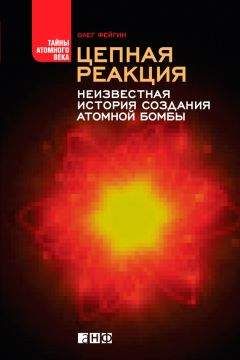Лестер Туроу - Будущее капитализма
25. Malcolm W. Browne, «Prized Labs Shift to More Mundane Tasks,» New York Times, June 20, 1995, p. Cl.
26. Laura D'Andrea Tyson, Who's Bashing Whom? Trade Conflict in High-Technology Industries (Washington, D. C.: Institute for International Economics, 1992), p. 32.
27. Karen Southwick, «How Far Can Serendipity Carry Adobe?» Upside, September 1995, p. 48.
28. Marguerite de Angela, Book of Nursery and Mother Goose Rhymes (New York: Dou-bleday and Co., 1953), p. 137.
29. Ann Markusen and Michael Oden, «Investing in the Peace Dividend,» in T. Schafer, ed., Foundations for a New Century (Washington, D. C.: Economic Policy Insti-tute/M. E. Sharpe, forthcoming), p. 17.
30. Malcolm W. Browne, «Budget Cuts Seen by Science Group as Very Harmful for U. S. Research,» New York Times, August 29, 1995, p. Cl.
31. PhilipJ. Hilts, «U.S. Intends to Raise Science and Technology Spending, Gore Says,» New York Times, August 4, 1994, p. 19.
32. «Survey Defense Technology,» The Economist, June 10, 1995, p. 8; Carol Lessure, Defense Budget Project, President Clinton's Defense Transition Program, May 10, 1994, p. 8.
33. «Of Strategies, Subsidies, and Spillovers,» The Economist, March 18, 1995, p. 84.
34. Edward O. Wilson, «Is Humanity Suicidal?» New York Times Magazine, May 30, 1993, p. 25–26.
35. Barry Bosworth, Prospects for Saving and Investment in Industrial Countries, Brookings Discussion Papers No. 113, May 1995, p. 2.
36. Ibid., p. 4; Martin Wolf, The Costs of Low Savings," Financial Times, May 2, 1995, p. 20.
37. Bosworth, «Prospects for Saving and Investment,» pp. 8–9.
38. Ibid., appendix, table 1.
39. Budget of the United States Government, Fiscal Year 1996, Historical Tables (Washington, D. C.: U. S. Government Printing Office, 1995), p. 122; Council of Economic Advisers, Economic Report of the President 1995 (Washington, D. C.: Ul S. Government Printing Office, 1995), p. 274; U. S. Department of Commerce, Statistical Abstract of the United States 1994 (Washington, D. C.: U. S. Government Printing Office), pp. 372, 607; Statistical Abstract 1979, p. 285; U. S. Department of Commerce, National Income and Product Accounts of the United States, 1959–1988 (Washington, D. C.: U. S. Government Printing Office, 1992), p. 64; Richard Ruggles, «Accounting for Savings and Capital Formation in the United States, 1947–1991,» Journal of Economic Perspectives, Spring 1993, p. 11.
40. Robert Heilbroner and William Milberg, The Crisis of Vision in Modem Economic Thought (New York: Cambridge University Press, 1995), p. 86.
41. Federal Reserve Bank of Kansas City, Policies for Long-Run Growth, 1992, p. 186.
42. Sylvia Nasar, «Older Americans Cited in Studies of National Savings Rate Slump,» New York Times, February 21, 1995, p. 1.
43. Edward C. Banfield, The Unheavenly City Revisited (Boston: Little, Brown, 1968), p. 53.
44. U. S. Department of Commerce, Long-Term Economic Growth 1960–1970 (Washington, D. C.: U. S. Government Printing Office, 1973), pp. 222-25.
45. «French Finance Minister Resigns,» Boston Globe, August 26, 1995, p. 2.
46. Shlomo Maital and Sharone L. Maital, «Is the Future What It Used to Be? A Behavioral Theory of the Decline of Savings in the West,» Journal of Socio-Economics, Vol. 23, No. 1/2, 1994, p. 10.
47. Economic Report of the President 1986, pp. 282, 336, 338.
48. Economic Report of the President 1995, pp. 306, 362–363.
49. Council on Competitiveness, «Can Credit-Happy America Be Saved?» Challenges, February 1995, p. 1.
50. «How Washington Can Stop Its War on Savings,» Fortune, March 6, 1995, p. 133.
51. «Global 500,» Fortune, August 7, 1995, p. Fl.
52. Martin Feldstein, Too Little, Not Too Much," The Economist, June 24, 1995, p. 72.
53. Lester C. Thurow, The Zero-Sum Society, Chapter 5, «Environmental Problems» (New York: Basic Books, 1980), pp. 103–122; Lester C. Thurow, Head to Head, Chapter 7, «Festering Problems: Global Environmentalism» (New York: Morrow, 1992), p. 219.
54. Richard M. Coughlin, ed., Morality, Rationality, and Efficiency: New Perspectives in Socio-Economics (London: M. E. Sharpe, 1991), p. 5.
55. Ibid., p. 46.
56. Richard Thaler, Quasi Rational Economics (New York: Russell Sage Foundation, 1991), p. 77.
57. Piore, Beyond Individualism, pp. 137–138.
58. Fred Hirsh, Social Limits to Growth (Cambridge, Mass.: Harvard University Press, 1976), pp. 143, 156.
59. Ibid., p. 137.
60. Bruno Dagens, Angkor: Heart of an Asian Empire (New York: Harry N. Abrams, 1995); Dawn F. Rooney, Angkor (Chicago: Passport Books, 1994), p. 32.




